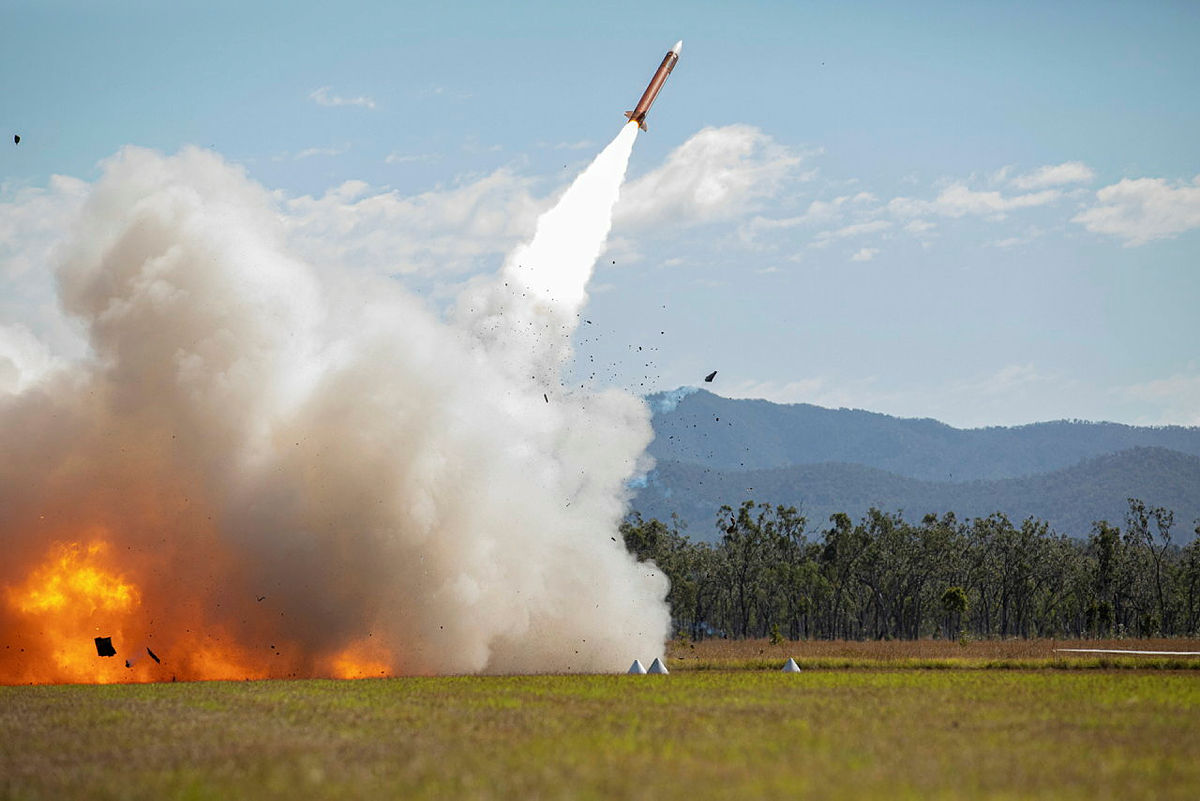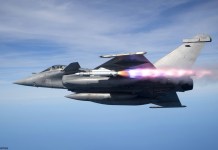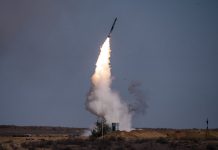In a move that is beleived to have irked China, the US Army has conducted some new tests with the Patriot air defense missile as part of its “QUAD military drills” in Australia.
The Chinese PLA Navy has parked a spy ship in the waters close to the location.
The US Army Pacific Air and Missile Defense units along with the Australian Defence Force completed the “first-ever” Patriot surface-to-air missile firing on Australian soil during Exercise ‘Talisman Sabre 21’ in the Shoalwater Bay Training Area in Queensland, Australia, on July 16, the US Army said in a statement
The biennial Talisman Sabre exercise seeks to “support the Indo-Pacific Pathways initiative, in order to advance a free and open Indo-Pacific”.
This year, the exercise involves more than 17,000 participants from the US, Australia, Japan, New Zealand, Canada, the UK, and South Korea. India, Indonesia, Germany, and France are participating as observers.

The exercise includes force preparation (logistic) activities, amphibious landings, ground force maneuvers, urban operations, air combat, and maritime operations. Activities will peak from 18 – 31 July across Queensland, the US Army said.
China Threatens To ‘Hunt Down’ US Military Jets If They Again Land In Taiwan
It further said the Patriot missiles shot down drones, believed to be Phoenix. Brigade commander Col. Matt Dalton, who supervises US air and missile defense units in Japan and Guam, said that the objective is to demonstrate the US army’s capabilities to move around the region.
To counter the Chinese as well as North Korean threats, the US is planning to move another Patriot battery from Okinawa in Japan to Hawaii for another exercise. Col. Dalton added, “We are trying to demonstrate our ability to quickly move our units around the Indo-Pacific to be able to counter any threat that is out there — our ability to move to different locations quickly, set up and establish a defense of a particular asset,” the colonel was quoted as saying by Stars and Stripes.

The Patriot missile is a long-range, all-altitude, all-weather air defense system that can counter tactical ballistic missiles, cruise missiles, and advanced aircraft. The missile system is equipped with a track-via-missile (TVM) guidance system.
Xi Jinping Wants To Achieve The Ultimate ‘Chinese Dream’; Experts Call It ‘Mission Impossible’
The missile has a range of 70 km and a maximum altitude of more than 24km. The missile system was deployed by the US forces during the Iraq conflict in 2003. It was stationed in Kuwait and reportedly destroyed several hostile surface-to-surface missiles using the new PAC-3 and guidance enhanced missiles.
The China-QUAD Tussle
The test of the Patriot missile comes in the backdrop of growing Chinese belligerence, which has brought the country in conflict with the QUAD (Quadrilateral Security Dialogue) – the US, India, Australia, and Japan.
The group was formed in 2007 but remained dormant during the next few years. Interestingly, the reason was not only China’s opposition to such a grouping but also Australia’s skepticism for the need for such an alliance to counter China.

Herve Lemahieu, Director of Power and Diplomacy Programme at Sydney’s Lowy Institute noted the Australian skepticism and its wariness to adversely affect its bilateral ties with China, especially in the initial years of the Quad. However, since then, “there had been a hardening of attitudes towards China among all the Quadrilateral partners, and in that sense, Beijing has been its own worst enemy,” Lemahieu told Al Jazeera.
US Speeds Up Development Of ‘Defense Shield’ That Can Thwart Hypersonic Threats From Russia & China
The growing Chinese assertiveness in the larger Indo-Pacific region has led to the revival of the QUAD. In the past few years, China has riled its neighbors and the QUAD countries alike. This has also seen a greater and more active engagement on the part of the US in the Indo-Pacific.
According to a US Department of State paper, “Across much of the Indo-Pacific region, the Chinese Communist Party (CCP) is using military and economic coercion to bully its neighbors, advance unlawful maritime claims, threaten maritime shipping lanes, and destabilize territory along the periphery of the People’s Republic of China (PRC). This predatory conduct increases the risk of miscalculation and conflict. The US stands with its Southeast Asian allies and partners to champion a free and open Indo-Pacific.”
Can US’ Money-Power ‘Tame’ Chinese Man-Power As China Emerging As World’s Largest Military Force
China’s crackdown on the pro-democracy protests in Hong Kong, its intimidatory tactics against Taiwan, and the PLA Navy’s aggressive posture in the disputed South China Sea have shifted global attention to the Indo-Pacific region.
Earlier this year, the US and Australia deployed warships in the region when a Chinese survey vessel was embroiled in a stand-off with a Malaysian oil exploration vessel off Malaysia’s Borneo. China is also involved in a border standoff with India in Ladakh. There is also a heightened territorial dispute between China and Japan in the East China Sea.
#US destroyer, #Chinese spy ship near #Taiwan's east coast
A #PLAN reconnaissance ship Type 815 appeared on July 13 about 40 n. miles east of Hualien County moving from north to south.
USS Pickney entered the Pacific via the Bashi Channel on Wednesday.
https://t.co/qK4m0EoyGT pic.twitter.com/2Kl7TnSTWy— Indo-Pacific News – Watching the CCP-China Threat (@IndoPac_Info) July 15, 2021
Against this backdrop, the QUAD is likely to act as “a military and strategic counterweight to China, if Beijing were to continue to challenge the status quo, not just in the South China Sea but also in the Indian Ocean”, noted Lemahieu.
Last month, the US Guided-missile destroyer USS Curtis Wilbur transited through the Taiwan Strait, a move Washington described as its “commitment to a free and open Indo-Pacific”. This was followed by military drills involving the US and Australia in the South China Sea.
The Talisman Sabre
The exercise began days after the US Secretary of State Antony Blinken announced that the US will continue to reject all the maritime claims of China in the South China Sea, and issued a warning against any attack on the Philippines. The US destroyer, Benfold, also conducted a freedom of navigation transit near the Chinese-claimed Paracel Islands.
China has reportedly sent its auxiliary general intelligence (AGI) vessel, Tianwangxing, a Type 815 ship, to keep a close watch on the exercise. The ship is expected to remain outside the territorial waters of Australia, but within its exclusive economic zone (EEZ) in the Coral Sea.

China said that the coverage by the Australian media on the legal presence of Chinese surveillance ships near ongoing US-Australian military exercises has been “unreasonably magnified”, particularly when Western countries like the US do the same on China
The US deployed at least one surveillance ship to the South China Sea in the first six months of this year, the South China Sea Strategic Situation Probing Initiative (SCSPI), a Beijing-based think tank, said in a report released last week.
US naval surveillance activities were accompanied by aerial monitoring with more than 2,000 US spy aircraft conducting close-in reconnaissance on China each year, the SCSPI said.




